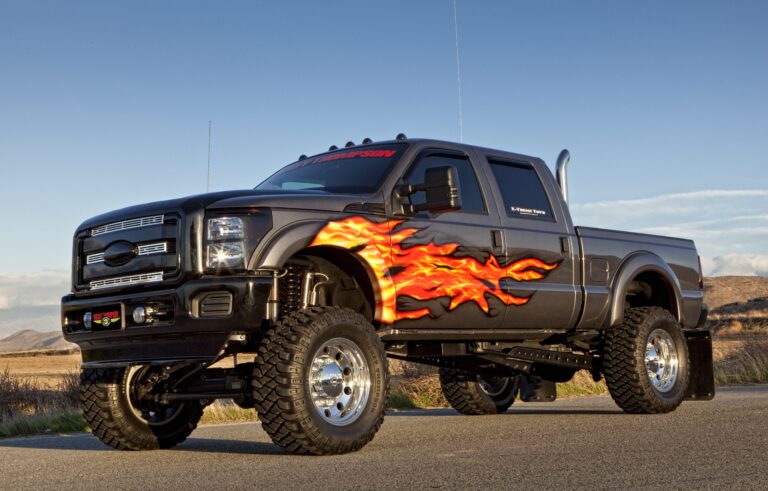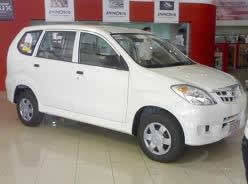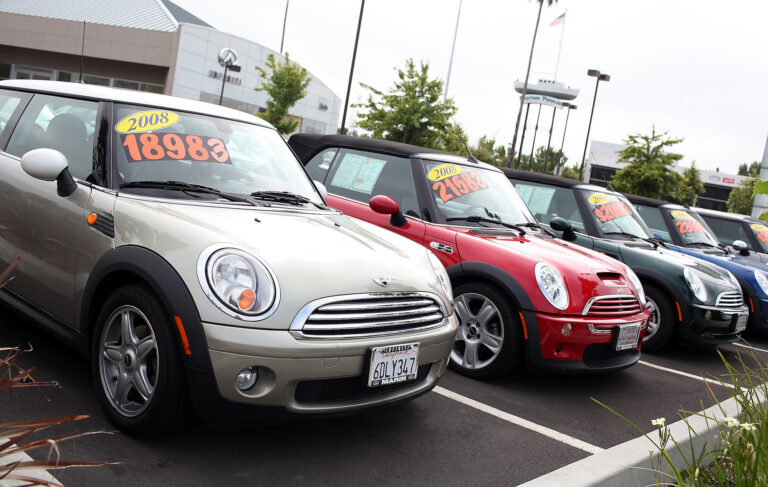90s Ford Trucks For Sale: A Comprehensive Buyer’s Guide
90s Ford Trucks For Sale: A Comprehensive Buyer’s Guide cars.truckstrend.com
Introduction: The Enduring Allure of Nineties Ford Trucks
In the vast landscape of automotive history, few vehicles command the enduring affection and practical appeal of 90s Ford trucks. More than just a mode of transport, these workhorses from a bygone era represent a blend of robust engineering, timeless design, and a simpler approach to vehicle mechanics that resonates deeply with today’s buyers. When we talk about "90s Ford Trucks For Sale," we’re not just discussing used vehicles; we’re exploring a vibrant market for reliable daily drivers, capable work trucks, nostalgic weekend cruisers, and coveted restoration projects.
90s Ford Trucks For Sale: A Comprehensive Buyer’s Guide
The 1990s was a pivotal decade for Ford’s truck division. It saw the refinement of the iconic F-Series, the rise of the compact Ranger, and the final iterations of the beloved Bronco, alongside the groundbreaking success of the Explorer SUV. These trucks, built with an emphasis on durability and straightforward maintenance, offer a compelling alternative to their modern counterparts, often at a fraction of the cost. Their importance lies not only in their practical utility but also in their cultural significance, embodying an era of American manufacturing prowess and no-nonsense utility. This article serves as a comprehensive guide for anyone looking to navigate the market for 90s Ford trucks for sale, offering insights, practical advice, and a clear roadmap to finding your ideal vintage Ford.
The Enduring Appeal of 90s Ford Trucks
Why do these trucks continue to captivate buyers decades after rolling off the assembly line? The reasons are multifaceted, blending practicality with a healthy dose of nostalgia.
Firstly, reliability and robust construction are hallmarks of 90s Ford trucks. They were engineered to withstand heavy use, whether on a farm, a construction site, or as a family hauler. The frames are stout, the powertrains are generally simple and well-understood, and the interiors, while not luxurious by modern standards, were built to last. This mechanical simplicity means fewer complex electronic systems to fail, making them easier and often cheaper to diagnose and repair.
Secondly, their iconic styling holds significant appeal. The F-Series, particularly the 1992-1996/97 "OBS" (Old Body Style) generation, boasts a classic, boxy silhouette that many enthusiasts prefer over the more rounded, aerodynamic designs of later trucks. The Bronco, with its removable top, remains a highly sought-after collector’s item, and even the Ranger and Explorer carry a distinctive aesthetic that harks back to an era of unpretentious utility.
Thirdly, parts availability is excellent. Due to the sheer number of these trucks produced and their commonality of parts across various models and years, both OEM (Original Equipment Manufacturer) and aftermarket parts are readily accessible and affordable. This makes ownership and maintenance far less daunting than with many other vintage vehicles.
Finally, there’s the nostalgia factor. For many, these trucks evoke memories of childhood, family road trips, or hard work. They represent a tangible connection to a past era, offering a sense of authenticity and character that modern vehicles often lack. Whether you’re seeking a capable workhorse, a platform for customization, or a classic vehicle with a story, 90s Ford trucks offer an unparalleled blend of attributes.
Key Models to Look For and Their Distinguishing Features

The 1990s saw a diverse range of Ford trucks and SUVs. Understanding the key models and their characteristics is crucial for a targeted search.
Ford F-Series (F-150, F-250, F-350)
The F-Series was, and remains, the undisputed king of the pickup truck market.
- Ninth Generation (1992-1996 for F-150, 1992-1997 for F-250/F-350): The "OBS" (Old Body Style). This is arguably the most popular and iconic 90s Ford truck. Known for its rugged looks and robust construction, the OBS F-Series is a favorite among enthusiasts.

- Engine Options:
- 4.9L (300 cu in) Inline-Six: Legendary for its bulletproof reliability and torque. Not fast, but incredibly durable.
- 5.0L (302 cu in) Windsor V8: A common choice, offering a good balance of power and efficiency.
- 5.8L (351 cu in) Windsor V8: More powerful than the 5.0L, often found in heavier-duty F-250/F-350s.
- 7.3L Power Stroke Diesel: Introduced in 1994.5, this turbocharged direct-injection diesel is highly sought after for its immense torque, towing capability, and legendary longevity. It commands a significant premium.

- Engine Options:
- Tenth Generation (1997-1999 F-150, 1997-1999 F-250 Light Duty): Marked a radical departure in design, with a more aerodynamic and rounded body. The F-250 Light Duty was essentially a heavier-duty F-150. The true F-250/F-350 Super Duty line launched in 1999.
- Engine Options: 4.2L V6, 4.6L V8 (Modular), 5.4L V8 (Modular). These were newer, overhead cam engines, generally reliable but different in character from the older Windsor V8s.
Ford Ranger
The compact pickup that offered versatility and better fuel economy than its full-size siblings.
- Years: The 90s saw the second (1993-1997) and third (1998-2011) generations. Rangers are nimble, easy to park, and great for light hauling or as a daily commuter.
- Engine Options: 2.3L I4, 3.0L V6, 4.0L V6. The 4.0L V6 offers the most power, while the 2.3L I4 is known for its impressive fuel efficiency.
Ford Bronco (Full-Size)
The iconic full-size SUV, production ended in 1996.
- Known for its rugged, utilitarian design and the legendary removable fiberglass top (though removal is not a quick task). Broncos are highly collectible, especially clean examples.
- Engine Options: Primarily 5.0L V8 and 5.8L V8, sharing powertrains with the F-150.
Ford Explorer
Ford’s hugely successful mid-size SUV, which defined the segment for years.
- First Generation (1991-1994) and Second Generation (1995-2001): While an SUV, it shares many mechanical components with the Ranger and is often considered in the light truck category due to its body-on-frame construction. A practical and capable family vehicle or mild off-roader.
- Engine Options: Primarily 4.0L V6, with a 5.0L V8 option becoming available in the second generation.
Where to Find 90s Ford Trucks For Sale
The digital age has made finding specific vehicles easier than ever, but local avenues still hold value.
- Online Marketplaces:
- Craigslist and Facebook Marketplace: Excellent for local, private party sales. Be prepared for a wide range of conditions and sellers. Use specific keywords like "Ford F150 1995" or "OBS Ford."
- eBay Motors: Good for a broader selection, including vehicles from out of state, often with more detailed listings and shipping options.
- Specialty Used Car Websites: Sites like Autotrader Classics, Hemmings, or ClassicCars.com often list higher-quality or restored examples.
- Auto Auctions: Local auctions, or larger, more prestigious events like Mecum or Barrett-Jackson, can yield finds, but require quick decision-making and often don’t allow for thorough pre-purchase inspections.
- Word of Mouth/Local Classifieds: Don’t underestimate the power of asking around or checking local bulletin boards. Sometimes the best deals are found offline.
- Enthusiast Forums and Social Media Groups: Many dedicated Facebook groups and online forums for OBS Ford trucks, Rangers, or Broncos have "for sale" sections. These communities can also provide valuable insights and advice.
What to Inspect Before Buying (The "How-To" Guide)
Buying a 20-30 year old vehicle requires a thorough inspection. Don’t skip these steps:
- Rust: This is the #1 killer of older trucks. Check the frame rails (especially near the suspension mounts and rear), cab corners, rocker panels, wheel wells, bed supports, and underneath the battery tray. Surface rust is manageable, but extensive structural rust means major repairs or a dangerous vehicle.
- Engine:
- Cold Start: Listen for knocking, ticking, or excessive smoke. Blue smoke indicates oil burning, white could be coolant (head gasket), black is usually rich fuel mixture or diesel specific.
- Fluid Leaks: Check under the truck for oil, coolant, or transmission fluid leaks.
- Maintenance Records: Ask for any service history. A well-maintained truck is always a better bet.
- Specific Engine Notes: For 7.3L Power Strokes, listen for injector knock, check for oil leaks from the HPOP (High-Pressure Oil Pump), and ensure it starts well cold (glow plug issues are common). For gas engines, check for valve cover leaks, intake manifold leaks, and worn accessories.
- Transmission: Test drive to ensure smooth shifts in all gears (both automatic and manual). Check the transmission fluid – it should be red/pink and not smell burnt.
- Suspension and Steering: Listen for clunks or squeaks over bumps. Check for excessive play in the steering wheel. Look for worn ball joints, tie rods, and bushings.
- Brakes: Test pedal feel (should be firm, not spongy). Listen for grinding or squealing.
- Interior: Check for excessive wear on seats, dashboard cracks, and functionality of all switches (windows, locks, radio, AC/heat). Ensure all lights work.
- Tires: Check tread depth and look for uneven wear, which could indicate alignment or suspension issues. Check the tire date codes – old tires, even with good tread, are unsafe.
- Electrical System: Test all lights, wipers, horn, radio, and power accessories.
- Paperwork: Verify the VIN on the truck matches the title. Ensure the title is clear (not salvaged or rebuilt).
- Pre-Purchase Inspection (PPI): If you’re serious about a truck, especially one from a private seller, pay a trusted mechanic to perform a thorough inspection. It’s the best money you’ll spend.
Pricing Considerations and Valuation
The price of a 90s Ford truck can vary wildly based on several factors:
- Condition: This is the primary determinant. A rust-free, low-mileage, well-maintained truck will command a significantly higher price than a rusty, high-mileage project.
- Mileage: Lower mileage generally means higher value, assuming maintenance was consistent.
- Trim Level: Higher trims like XLT, Lariat, and Eddie Bauer (for Bronco/Explorer) usually fetch more due to added features.
- Engine: Diesel engines (especially the 7.3L Power Stroke) command a premium due to their desirability for towing and longevity. Certain gas engines (like the 4.9L I6) are also highly valued for their reliability.
- Drivetrain: 4×4 models are generally more expensive than 2WD, particularly in regions with snow or off-road enthusiasts.
- Modifications: Tasteful, high-quality modifications can add value, but poorly executed or extreme mods can detract from it.
- Region: Prices can vary regionally based on demand, climate (less rust in dry climates), and local markets.
Valuation Tools:
- NADA Guides and Kelley Blue Book (KBB): Can provide a rough estimate for older vehicles, but often don’t fully capture the collector market value for desirable models.
- Hagerty Valuation Tool: Excellent for classic and collector vehicles, often providing more accurate ranges for clean OBS trucks and Broncos.
- Comparable Sales: The best way to gauge value is to look at recently sold similar vehicles on eBay, Bring a Trailer, or other auction sites. This gives a real-world snapshot of what people are paying.
Common Challenges and Solutions
Owning a vintage truck comes with its quirks. Being aware of potential challenges helps in preparation.
- Age-Related Wear: Components like bushings, hoses, belts, seals, and wiring insulation degrade over time.
- Solution: Budget for preventative maintenance and replacements. Factor in a "refresher" budget after purchase.
- Rust: As mentioned, it’s a major issue.
- Solution: Prioritize rust-free examples. If buying a project, understand the significant time and cost involved in rust repair.
- Fuel Economy: These trucks were not designed for efficiency. Large engines and older technology mean lower MPGs.
- Solution: Manage expectations. If fuel economy is a top priority, consider a Ranger or a truck with a smaller gas engine.
- Safety Features: Lacking compared to modern vehicles (no airbags in early 90s, less advanced crumple zones, no ABS on all models).
- Solution: Drive defensively. Consider upgrading lighting and brakes where possible.
- Parts Availability for Specific Items: While common mechanical parts are plentiful, some specific trim pieces, interior components, or unique body panels for certain years can be harder to source.
- Solution: Utilize online forums, junkyards, and specialized aftermarket suppliers. Be prepared to search or pay a premium.
Tips for a Successful Purchase
- Set a Realistic Budget: Don’t just budget for the purchase price. Factor in insurance, registration, and a significant amount for initial maintenance and potential repairs.
- Be Patient: The right truck won’t appear overnight. Wait for a well-maintained example that fits your needs and budget.
- Don’t Be Afraid to Walk Away: If something feels off, or the seller is evasive, it’s better to pass on a deal than to regret a bad purchase.
- Bring a Knowledgeable Friend or Mechanic: A second set of eyes, especially from someone experienced with these trucks, is invaluable.
- Test Drive Thoroughly: Drive at various speeds, including highway. Test 4×4 engagement (if applicable), brakes, and listen for any unusual noises.
- Negotiate: Always negotiate the price. Most sellers expect it.
Price Table: Estimated Values for 90s Ford Trucks (USD)
Prices are highly variable based on region, condition, mileage, and specific options. These are general estimates.
| Model | Year Range | Common Engine(s) | Condition: Poor/Project | Condition: Fair/Driver | Condition: Good/Collector |
|---|---|---|---|---|---|
| Ford F-150 (OBS) | 1992-1996 | 4.9L I6, 5.0L V8, 5.8L V8 | $1,500 – $4,000 | $4,000 – $8,000 | $8,000 – $20,000+ |
| Ford F-250/F-350 (OBS) | 1992-1997 | 5.8L V8, 7.3L Power Stroke Diesel | $2,000 – $5,000 | $5,000 – $12,000 | $12,000 – $35,000+ |
| Ford F-150 (New Body Style) | 1997-1999 | 4.2L V6, 4.6L V8, 5.4L V8 | $1,000 – $3,000 | $3,000 – $6,000 | $6,000 – $15,000+ |
| Ford Ranger | 1990-1999 | 2.3L I4, 3.0L V6, 4.0L V6 | $800 – $2,500 | $2,500 – $5,000 | $5,000 – $12,000+ |
| Ford Bronco (Full-Size) | 1990-1996 | 5.0L V8, 5.8L V8 | $3,000 – $8,000 | $8,000 – $20,000 | $20,000 – $50,000+ |
| Ford Explorer | 1990-1999 | 4.0L V6, 5.0L V8 | $700 – $2,000 | $2,000 – $4,500 | $4,500 – $10,000+ |
Frequently Asked Questions (FAQ)
Q: Are 90s Ford trucks reliable?
A: Generally, yes. They are known for their robust construction and relatively simple mechanics, which contributes to their reliability. However, like any older vehicle, regular maintenance is key, and age-related wear items will need attention.
Q: What’s the best engine for a 90s F-Series?
A: It depends on your needs. For sheer longevity and torque, the 4.9L I6 is legendary. For a balance of power and everyday driving, the 5.0L or 5.8L V8s are good. If you need serious towing power and are willing to pay a premium, the 7.3L Power Stroke Diesel is considered one of the best diesel truck engines ever made.
Q: How much should I budget for maintenance after buying a 90s Ford truck?
A: It varies greatly by condition. For a decent driver, budget anywhere from $500-$2000 in the first year for basic catch-up maintenance (fluids, filters, spark plugs, belts, hoses, tires if needed) and to address minor issues. If you buy a project, the sky’s the limit.
Q: Are parts easy to find for 90s Ford trucks?
A: Yes, generally. Due to their popularity and high production numbers, mechanical parts are widely available through auto parts stores, online retailers, and even junkyards. Some specific body panels or interior trim pieces might require a bit more searching.
Q: Can I use a 90s Ford truck as a daily driver?
A: Absolutely. Many people do. They are practical, comfortable enough, and generally reliable for daily use. Just be aware of their lower fuel economy and fewer modern safety features compared to newer vehicles.
Q: What is "OBS"?
A: "OBS" stands for "Old Body Style." It specifically refers to the ninth-generation Ford F-Series trucks produced from 1992 to 1996 (F-150) and 1992 to 1997 (F-250/F-350). These trucks are highly popular among enthusiasts for their classic, boxy design and robust build.
Conclusion: Driving a Piece of History
The market for 90s Ford trucks for sale is a testament to the enduring quality and appeal of these American icons. Whether you’re a seasoned enthusiast or a first-time vintage truck buyer, the rewards of owning one of these vehicles are immense. From the unyielding work ethic of an OBS F-Series to the compact versatility of a Ranger or the adventurous spirit of a Bronco, there’s a 90s Ford truck out there for every need and passion.
By understanding the models, knowing where to look, conducting a thorough inspection, and setting a realistic budget, you can navigate the buying process with confidence. These trucks offer not just a mode of transportation, but a tangible connection to a celebrated era of automotive design and engineering. Investing in a 90s Ford truck isn’t just a purchase; it’s an embrace of rugged dependability, timeless style, and a piece of automotive history that continues to thrive on the open road. Happy hunting!






